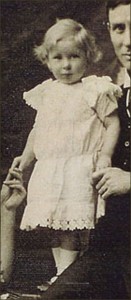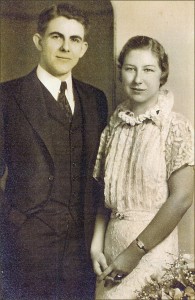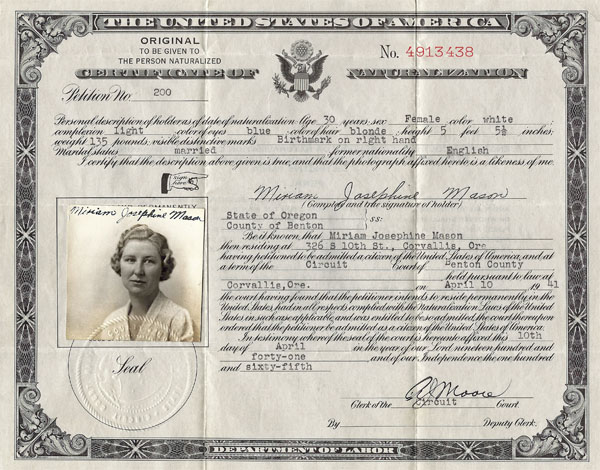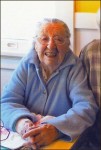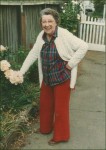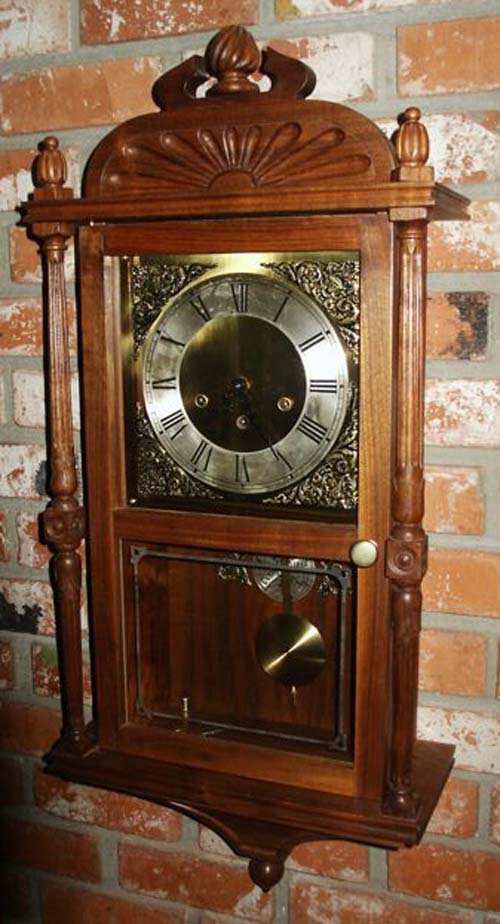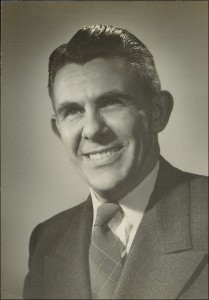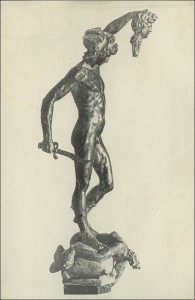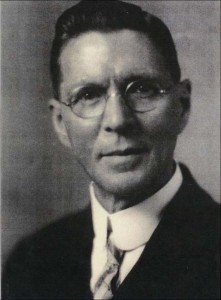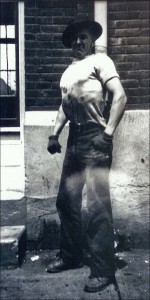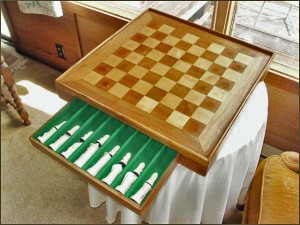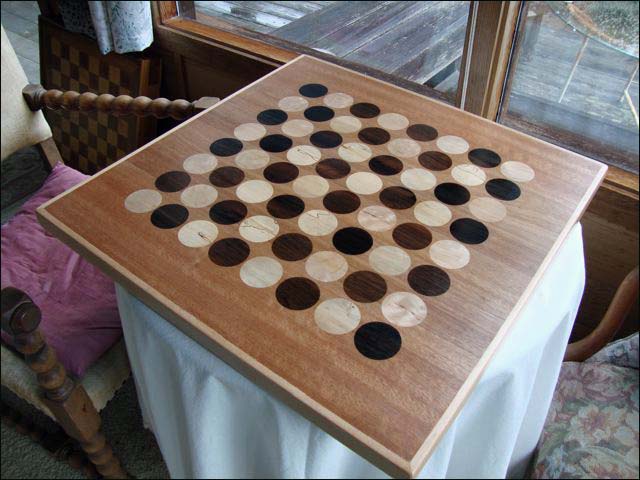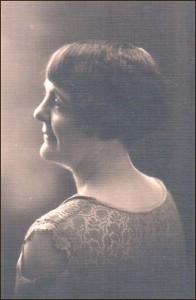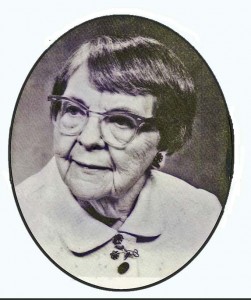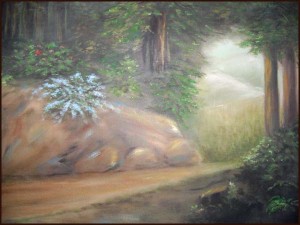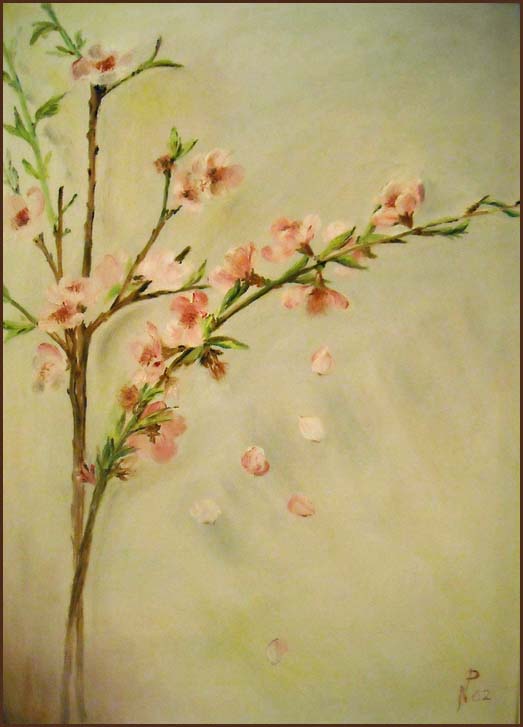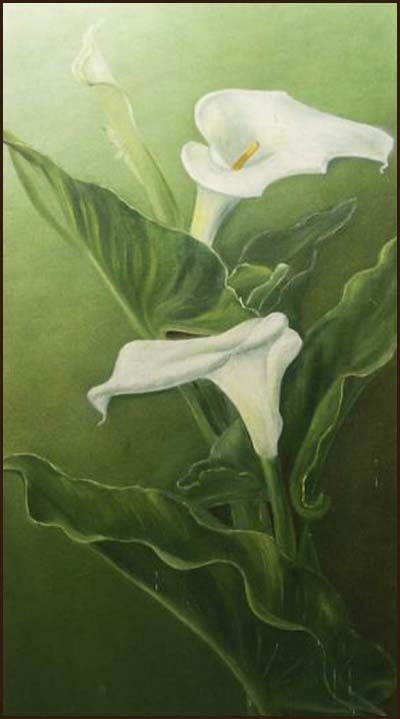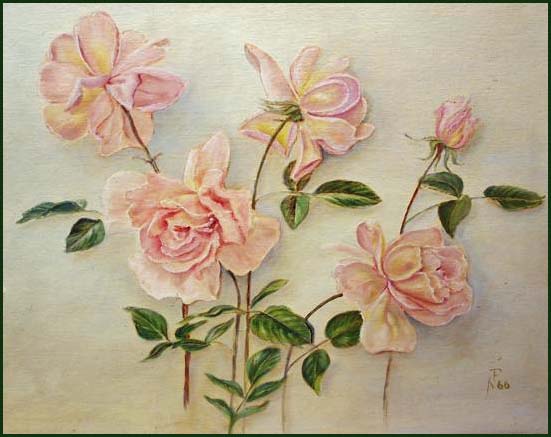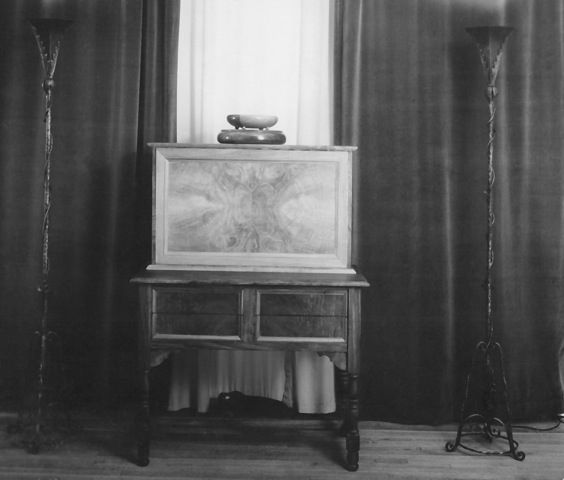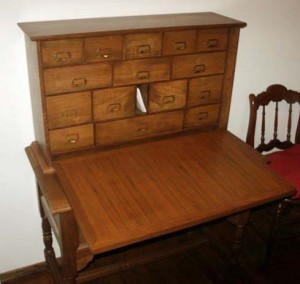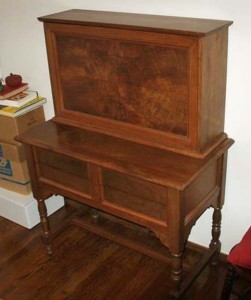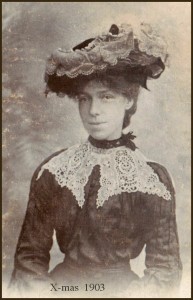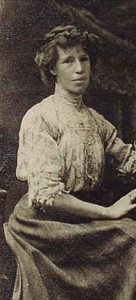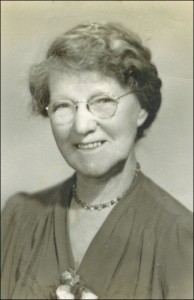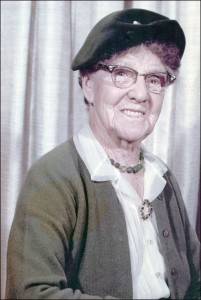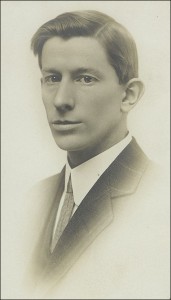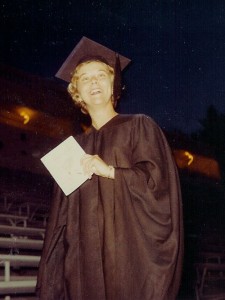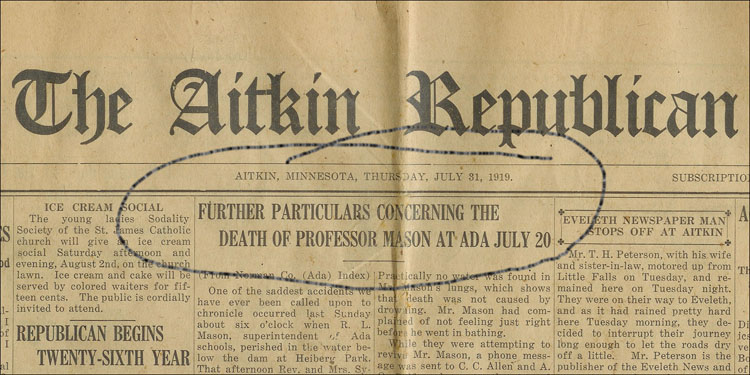Archive for May, 2010
“Jo” The Home Economist
My mother, Miriam Josephine (Kidd) Mason, was born on August 23, 1910, so at this writing (May 29, 2010), she is very close to the century mark. She may make it and she may not. It will be a near thing. In my extended family she is the last of the previous generation and has lived to see many changes. She was born in South Africa after the Boer War, lived on the Isle of Jersey in her youth, and at No. 1 Crooked Billet, Wimbledon Common, London. She immigrated to the Calgary area of Canada with her mother and two brothers at eleven years of age. The Canada situation turned out to be not as advertised and after a short stay the family relocated again to Oregon. She graduated from Oregon State (College) University in 1934 with a degree in home economics and worked professionally in that field for several years. In 1936 she married my father, Donald Lyman Mason (more here ), and gave birth to me in 1938. Two years later my sister Irene Joyce (Mason) Jenkins was born and in 1942 the new family moved to Palo Alto, Cailfornia where she still resides in the same house.
Mom applied her professional training to running our household and took pride in her work. She was an expert seamstress and made many clothing items for herself and for us kids. Her pies were to die for and fortunately that talent has been passed on to my sister. Like my father, she had a love of poetry and that also has been passed on. All in all she was a good mom and I have many fond memories, especially from when I was young. Below are some stories, in roughly chronological order, that come to mind:
Mom has no memory of South Africa but she does remember Jersey and I have a few of those memories on tape. Her memory of No. 1 Crooked billet is better, and I remember her telling about looking out the window during WWI and seeing the “Iron Cross” on the bottom of the wings of the German planes and hearing the shrapnel from the antiaircraft guns falling on the roof (more here).
The only things I remember Mom saying about the trip to Calgary was that their ship, upon entering the mouth of the St Lawrence River, had to back out again because there was an iceberg lodged there. She also mentioned the trip across Canada on the Canadian Pacific Rail Road. Apparently her mother, Miriam Phoebe (Williams) Kidd, was quite nervous about keeping the family together at various intermediate stops where they detrained to walk about a bit. She didn’t want anybody left behind out there in the middle of nowhere.
We also heard a story about attending school in Canada. Mom still had an English accent and the teacher was from the Bronx of New York City. Even though they both were speaking English they couldn’t understand each other.
A later school story was about her experience while attending classes in Seaside, Oregon after they had entered the USA. First thing in the morning all the students stood to pledge allegiance to the flag. Jo was somewhat bewildered and decided that since she was a British subject she should not do this thing. When asked why she said, “It’s not my flag and I’m not going to salute it.” That seemed to make sense, but later another student’s mother stopped Jo’s mother on the street saying, “Mrs. Kidd I understand that you won’t let your child pledge allegiance to the flag.” That was the first my grandmother had heard about it. Apparently a genuine foreigner was quite a novelty to insular little Seaside.
In Oregon they lived for a short period with relatives in Portland. On one occasion, to earn a little extra money, they signed up to pick strawberries at a farm near the base of Mt. Hood. Jo and her mother picked strawberries all day but toward late afternoon Jo grew tired of the job and wandered off on a path that led into the nearby woods. After she had gone down the path some distance she came to an old abandoned cabin. Jo was curious and went inside to look around. The cabin was empty and it looked as if no one had been there in a long time. In one corner was a cupboard which Jo opened. There was nothing in the cupboard except on one shelf. There, way in the back, was an old egg cup. Jo decided that the egg cup needed a better home so she took it and put it in her pocket. On her way back to the strawberry field she came face to face with a black bear. Jo stood very still and looked at the bear. The bear stood very still and looked at Jo. They looked at each other for a long time. Finally, the bear turned slowly and walked away. When the bear was out of sight Jo ran as fast as she could back to her mother in the strawberry field. Somewhere in the excitement she lost her punch card that told how many baskets of berries she had picked, but the good farmer paid her anyway. The egg cup is now in the possession of my daughter, Deanna Lynne Mason
After graduating from college, Jo was hired by San Joaquin Power and Light with headquarters in Fresno, California. This was in the days of the Rural Electrification Administration, and isolated rural communities and farms were being electrified at a rapid rate. Jo’s job was to go to these outlying areas and demonstrate electrical appliances to those who were unfamiliar with them. It was considered one the best jobs a woman could get in those days. Salesmen from the various electrical appliance manufacturers would chase after her at the end of each day to find out where she had been. Naturally, they would followup in short order. Sometimes they would chase her around personally too and she had some stories to tell about that.
I didn’t realize until just recently that she put off becoming a U.S. Citizen until she was 30 years of age. When she did finally get around to it there were some unanticipated complications. She had a hard time proving she was in the country legally. It seems that when she came down from Canada at about age twelve the border officials listed only her mother’s name and then added the phrase “and child.” Proving that she was that “child” turned out to be something of a task.
Having traveled extensively during her early life, upon reaching Palo Alto during WWII, Jo put down roots. With her children in the local schools and her husband gainfully employed at Stanford University, Jo settled in for the long haul. Just a few years ago I heard her refer to herself as “a stick in the mud.” (click image for larger view)
Donald L. Mason
Don Mason was Uncle Rob’s father. Rob and sister Irene learned much about arts and crafts at his knee. Don was a graduate of Oregon State University and later became a professor there during the Great Depression. During WWII he became a professor of industrial arts at Stanford University. He was a consummate craftsman in many different mediums.
Wall Clock
This clock was 75% complete when Dad died. It was subsequently finished by me and now resides in my sister’s residence in Sunnyvale, Cailfornia.
The Academic Craftsman
My father, Donald Lyman Mason, was a consummate craftsman, easily the best all-around craftsman I have known in my life. The story of how he got to be that way is interesting. He was about eight years old when his father, Ralph Leslie Mason, perished (click here). His mother, Nellie Harriet (Sly) Mason, took his older sister and moved from Minnesota to Eugene, Oregon to live with her parents. Dad was left with his paternal grandparents for about a year while my grandmother got settled in Eugene. My great grandfather, William Merrill Mason, was a general contractor and was very much of the old school in his approach to his occupation. He had a large assortment of tools which he used in his trade, and which he meticulously maintained. My father was very interested in all those tools and wanted to learn to use them, but great grandfather was not about to let an eight year old boy mess with his tools. You had to serve an apprenticeship first, and eight or nine years old was just too young for that. This so frustrated my father that when he eventually did get access to tools, he went all-out and proved to be a virtuoso. The eventual result was he became a professor of industrial arts, first at Oregon State University (College) and later at Standford University.
Dad didn’t just know how to use tools and how to build beautiful things (see a few examples here), in most cases he could tell you the history of each type of tool, why it was invented, who invented it and how it had evolved since then. This academic approach is something he may have inherited from his father who was, in fact, a professor. Dad kept a copy of The Autobiography of Benvenuto Cellini. This is a book written in the 1500s, and while admitting that Cellini himself was something of a scoundrel, he nevertheless admired his craftsmanship as a metal smith. Toward the end of the book there is a detailed description of how Cellini cast the huge bronze sculpture called Perseus with Medusa’s Head. Dad used to cite that passage as an example of the history of foundry practice.
Backing up a bit, circa 1920 my grandmother found a job in Eugene as secretary to the president of the University of Oregon and Dad joined the extended family there. In his maternal grandfather, Chester W. Sly, Dad found a more tolerant personality, and one who also had an extensive collection of tools. Chester was a butter maker by trade, but he learned his trade in college. He was a graduate of Lawrence University in Wisconsin back in the days when trades were still taught at the college level. This also may have contributed to Dad’s academic approach since Chester became his new mentor. A number of Chester’s tools are now in my possession and I know this because he stamped “Sly” into his tools with a center punch. It’s a nice short name for that kind of thing. It is, by counting from Chester, that my daughter is a fifth generation college graduate.
Dad graduated from Oregon State in 1936(?) while the Great Depression was in full force. However, he and two other top students, Asa Robly and Russ Jenkins, were hired by the University as teaching assistants. There were no other jobs to be had so they stayed in academia. Asa’s subject was welding and fabrication, Russ was a machinist, and Dad taught foundry. The three of them were good friends. After several years Asa took a position at Stanford teaching his specialty and shortly thereafter he wrote Dad saying, “They need someone here to teach foundry.” One thing led to another and in 1942 just after the start of WWII we moved to Palo Alto, California. One of the good things about Dad’s involvement with the industrial arts curriculum is that it earned him a “Critical Industry Deferment” from the draft for the duration of the war. During 1944 and 1945, while I was starting grade school, I was considered lucky because I had a dad at home. Most of the other kids’ fathers were off fighting somewhere.
Here is another little story that illustrates Dad’s reputation as a superb craftsman. In 1956 I enrolled at Oregon State to follow in Dads footsteps. I majored in industrial engineering and in those days that involved taking many shop courses. When it came time for me to take machine shop I introduced myself to Russ Jenkins who was still on the faculty and, by then, was a full professor. On the first day of class a young teaching assistant (TA) gave a lecture on how to sharpen a tool bit for a metal lathe. He then gave each student a piece of tool bit stock and sent them off to a long row of grinders along one wall of the shop to create a tool bit. After a short time the TA started down the row giving a critique to each student. It was, “A little more here,” “A bit more there,” ” This angle is not quite right,” — that kind of thing. By the time he reached me I was finished. I handed him my bit and and he scrutinized it. Then he looked at me and said, “You’ve done this before.” “Actually, I haven’t, but your lecture was quite clear,” was my truthful reply. Just then Professor Jenkins walked by and the TA turned to him and said, “Look at this, and he says he has never done this before!” Professor Jenkins took the bit, looked it over, then he looked up at me.”Oh!” he said, “That’s Don Mason’s son. He’ll probably do everything right.”
Right then and there I knew that I must ace this course. It was imperative. Nothing less than an “A” would do. All the other courses in my curriculum became secondary while I focused on machine shop. I am happy to report that it worked and I got my “A.” In fact, I got an “A” in all the shop courses largely because I arrived way ahead of the game.
At any rate that is the kind of father that my sister, Irene Joyce (Mason) Jenkins, and I grew up with. Dad made sure we each had our own workbench in his home shop. To this day, if you hand my sister any kind of tool (hand tool or power tool), even if she has never used it before, she will handle it with a natural competence. When it comes to tool country we are natives!
One last little story to cap off this tale. Somewhere around 1960, plus or minus a few years, Dad decided to build a wall along one side of the property in Palo Alto. It would run the length of the property (150 feet), be built of colored concrete blocks and have an ornate element to it. Because it was built by Dad, it is still there fifty-plus years later. It is still as strong and straight and true as ever, although the color is a little faded. One day while he was finishing this project out near the sidewalk at the front of the property a little old lady came stumping along using a cane. She stopped for a while to watch and they smiled at each other. Finally the lady said,
“A thing of beauty is a joy forever:”
This is the first line of a poem by John Keats and one of a number that Dad had committed to memory. Dad stopped what he was doing, turned to the little old lady and replied,
“Its loveliness increases; it will never”
She continued,
“Pass into nothingness; but still will keep”
He replied,
“A bower quiet for us, and a sleep . . .”
I am not certain they got through the whole poem, it is lengthy, but there was a true meeting of the minds. Later, when Dad came in for dinner, he was still smiling broadly and chuckling to himself. As we sat down for dinner Mom said, “What are you so pleased about?” and he related what had just happened. It gives you just one more view of my remarkable father.
Here is a tale about the master craftsman from daughter Irene: “We have
three sons and when the first two David and Robert were born my Daddy
(he always wanted to be called Daddy) took them to his workshop and put
sawdust in their shoe. That, he said, “will make them a good craftsman”
and so it did in the fields that they pursue, Biotech and IT. He died just
before our third son Andrew was born so my husband Don and I took Andrew
to his workshop and put saw dust in his shoe. Andrew is the one who is
especially good with his hands at building almost anything; it is
like a soul transfer with my fathers words echoing down ‘If it is worth
doing, it is worth doing right’. Andrew is a contractor and works in
the San Diego area.
AJ Built Construction, ajbuilt@gmail.com
Robert also has a love of working with wood and is fixing his garage at his new home with a large workbench. His IT WiFi co. website is (http://www.skywavebroadbadn.net)”
Grandfathers We Never Knew
These are not an upbeat posts. Both my maternal and paternal grandfathers died at the early age of about forty, and yet each was important in shaping the character of their descendants including me.
Nellie Harriet Parker
Like my maternal grandmother, my paternal grandmother, Nellie Harriet (Sly/Mason) Parker (NHP) also lost her husband at mid-voyage in life (click here). She also rose to the occasion, moving from Minnesota to live with her parents in Eugene, Oregon. She found work as a secretary to the president at the University of Oregon. Later, she remarried and managed to see two children (from her first marriage) through college. She was an intelligent, studious person and a devout follower of Mary Baker Eddy.
Nellie was married shortly after graduation from high school. She married her teacher, who considered her his best student. One story, my daughter reminds me, was Nellie’s mother Carrie Amelia (Dykins) Sly grumbling because first she had to make Nellie a graduation dress and then in short order make her a wedding dress.
When my sister and I were small she lived in Stockton, California. When her husband retired they moved to Boulder Creek, California and upon his death she moved to a trailer park in Soquel, California. So, for a good portion of the time we were growing up, she was near at hand. Finally, toward the end of her life, she moved to Lafayette, Indiana to live with her daughter, Beatrice Amanda (Mason) Yearian, known to us as “Aunt Bee.” “Grandma Parker” passed away at age 88.
NHP was a painter (oils) and she was pretty good. Included are samples of her work:
(click on images for larger view)
I visited NHP just before she moved back to Indiana. It was a kind of a farewell visit, she was busy going through her things and pruning her excess belongings. She was quite deaf by then. It’s a curse that seems to have descended from the Sly family line, and my sister and I are the latest to feel its effects. Rather than shout, I wrote NHP notes and she seemed to like that procedure. Then she brought something to show me. I couldn’t have been more surprised. It was a very small pistol — a .22 single shot Derringer. It was so small it fit in the palm of my hand. I looked at her with a question on my face. She said it had belonged to her grandmother. She then got a bemused look on her face which turned into a wide smile and said, “My grandmother was quite a woman. She was married four times and one of her husbands was a Mississippi River boat captain.” The gun was the kind an attractive woman might carry if she circulated in dicey environs and Emma would still have been a young woman at the time of the Civil War. I wouldn’t consider it deadly, but it was probably more effective than a hat pin.
My grandmother (NHP) was a serious, straight-laced person. There was absolutely nothing about her that was flamboyant or risque. It is hard to imagine that she was descended from a person who might have had those characteristics.
A search of records turns up Emma Lydia (Harvey/Buchanan/Dykins/Branch) Newell. Nellie is descended from her second husband. I’ll bet Emma’s story would make an interesting post to my Family Stories category, but that story is probably lost, which is another good reason to write these things down.
Miriam Phoebe Kidd
As mentioned in a previous post of this category, My uncle ,George Edwin “Ted” Kidd (GEK), wrote a history of the Kidd family centered around my grandfather William George Kidd (WGK). This is the traditional way of writing a family history in a patriarchal society and he did an excellent job. However, to my way of thinking, the real and central strength of the Kidd family resided in my grandmother Miriam Phoebe (Williams) Kidd (MPK). To use a nautical analogy, she was the one who stepped up to the helm when the Captain died (click here) in the middle of a long voyage and she brought the ship safely into port in excellent fashion. As WGK advised on his death bed, she immigrated to the New World with three children in tow, put them all through college and lived to the ripe old age of ninety-five. All this while blind in one eye since WWI. She traveled extensively in the latter part of her life and drove a car until she was ninety. Since she lived to be more than twice the age of her husband when he died there is much to cover, and if I were to go into the same level of detail as did GEK it simply would not fit into a blog format. In addition, my other uncle, Herbert Arthur Wilson “Bert” Kidd (HAWK), has already produced a detailed piece based on MPK’s own records together with his recollections. Consequently, I will simply add some of my own recollections, as well as those of my sister Irene Joyce (Mason) Jenkins (IJJ) and others who knew her well.
My sister and I probably had more in-depth exposure to MPK than anyone else of our generation in the Kidd family. Primarily because MPK lived within forty miles of us while we were growing up. She was a frequent visitor to our home and we were frequent visitors to hers. Often in the summer when school was out one of us would be deposited in Santa Cruz to spend up to a week with “Grandma Kidd.” It was on these occassions that we often heard stories of her life, and what an interesting life it was.
One story that I don’t find covered by either of my uncles is how she lost the sight of her left eye. It happened during WWI when MPK and my mother, Miriam Josephine “Jo” (Kidd) Mason (MJM), lived at No. 1 Crooked Billet, Wimbledon Common, London, England. One night when a blackout was in force MPK was returning home with some items purchased at a local grocer. Jo answered the knock on the apartment door and unlocked it to find MPK with blood gushing from a severe cut on her forehead and streaming down her face and front. Needless to say, this made quite an impression on my mother who was nine or ten at the time. According to MPK she had run into a lamp post or pole of some kind because of the darkness. I still don’t understand how, but because of this blow she lost the sight of her left eye. Much later in life, that eye gave her more trouble and it was replaced with a glass eye. So, despite the fact that GEK gives much space to things military in his memoirs, i.e. the Boer War and WWI, “Mum” seems to be the only one of the family to have actually suffered a casualty as the result of war and that fact goes unmentioned. Losing the sight of her left eye was just one of many hardships that MPK worked through, and in spite of it she drove a 1937 Plymouth until she and the car were both quite elderly.
The burdens of responsibility fell very early on the young MPK. As HAWK points out: “MPK’s mother had rheumatic fever in her youth and was never a strong person. She died in 1892 when MPK was sixteen. . . MPK’s father employed a maid and a washerwomen (laundress). Neverthelesss, MPK carried a great deal of the responsibility for the four children from about 12 to 4 years old. She did much of the shopping for food. . . She left school when she was 14 because of her mother’s steadily deteriorating health. Her mother taught her how to cook and care for a household. Her father who was very hot-tempered had little patience with MPK’s mistakes. . . MPK kept house for her father for eight years after her mother died.” Because of this early experience MPK seems to have been almost “trained” for events that overtook her later in life.
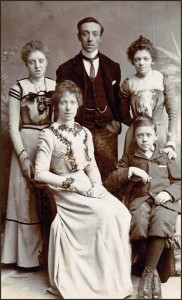
MPK was formally trained as a nurse and she worked at this profession at various times during her life. She also worked in retail sales from time to time, but her specialty was running boarding houses for paying guests. This is something she did on numerous occassions widely separated in time an place. From all that I have heard, she did this with a fair amount of success and a lot of hard work.
Much much later in life, after MPK’s children were all schooled, employed and married MPK settled in Santa Cruz, California and her life began to level out to “smooth sailing.” She quite enjoyed independent living and traveling. I remember her saying, some time in her eighties, that she felt that the last twenty years of her life must have been a reward for all the hard work she had done earlier. During that time she had many friends and socialized a great deal. To read about something that happened on one such occasion, click here.
Here are some memories at random:
I remember once as a small boy who had recently learned of the pilgrims coming to America, asking my Grandma if she had come over on the MAYFLOWER. That brought a hearty laugh and she said, “No but you can tell your friends that I once came over on the QUEEN MARY.” Many years later I attended a convention of port authorities aboard the QUEEN MARY which by then was permanently docked at the Port of Long Beach. I wandered about the old ship wondering how many times my path crossed tracks made by MPK many years ago.
My friend (and ex-wife) Lynne Dotson recently reminded me that: MPK used to keep a pot of stew on her stove,”in case someone should stop by.” Every day she would add something to it and bring it to a boil. It didn’t look very good but it was always quite tasty.
Even at a fairly advanced age MPK was a walker. She could hike long distances without seeming to tire. Once when I was staying at her place she suggested we go for a walk. We ended up hiking all the way to Capitola and back, a distance of perhaps eight miles round trip. At the end I, an early teenager, was completely bushed and she was still going strong.
Here is a memory from sister Irene: “I frequently tell the story of she and I going to a movie in Palo Alto shortly after she got her glass eye. She rubbed her eye and the glass eye fell on the floor and we couldn’t find it. I had to go for a usher and asked to borrow his flash light because my Grandmother had lost “something“. It was early teen or pre teen embarasment. Luckily she found it before I got back with the usher.”
Here is a contribution by my cousin Phil Kidd: “One time when we were living in Ridgewood, Ted hung up chuckling after talking to Grandmother. Being curious, I asked him what’s so funny? He laughingly said your Grandmother was telling me how she had to scold her neighbors. She said the ‘old biddies’ were out in the wind without shawls or anything on their heads. Ted had asked her: ‘Do you wear a shawl or anything when it’s windy?’ She indignantly replied: ‘Of course not, I am not that old.’
Not seeing the point, I asked: ‘What’s so funny about that?’ Ted smiling looked at me and said: ‘Phil, your Grandmother is in her 80s and at least 10 years older than those ‘old biddies’ I always took that as an indication of Grandmother’s youthful outlook on life and her indomitable spirit.”
Ralph Leslie Mason
My paternal grandfather Ralph Leslie Mason (RLM) was a graduate of Carlton College in Minnesota. By all accounts he was a brilliant scholar. His main field of study was physics and after graduation he went into teaching, but I am not sure at what level. He eventually married “his best student,” Nellie Harriet Sly, and the cap and gown he used at graduation has subsequently been used by following generations — a tradition that I hope will continue.
At age forty RLM took the position of Superintendent of Schools for the town of Ada, Minnesota. Ada is located in the northwest corner of the State, and his first year coincided with the great flu epidemic of 1918.
During the summer of 1919 the family and some friends went for a picnic at a nearby park. While the picnic supper was being prepared RLM took son Donald (my father) into waist deep water for a swimming lesson. Suddenly RLM gasped and sank into the water. He was apparently the victim of a heart attack that was swift and fatal as almost no water was found in his lungs. Dad once told me that his last contact was with his father below him reaching up and trying to push him toward shore.
It is a very sad story and is covered in greater detail in the July 31, 1919 issue of The Aitkin Republican (see header below — a copy can be provided). Looking back from the perspective of many years, I now see that the legacy of RLM is a very strong emphasis on education among his descendents.
Categories
- THE GALLERY
- Uncle Rob's Art
- 3D Works (stills) I
- 3D Works (stills) II
- 3D Works (stills) III
- 3D Works (video)
- Design & Abstract I
- Design & Abstract II
- Design & Abstract III
- Figurative Works I
- Figurative Works II
- Landscapes I
- Landscapes II
- Largest Art Project
- Nautical and Marine Images (video)
- Nautical and Marine Images I
- Nautical and Marine Images II
- Nautical and Marine Images III
- Nautical and Marine Images IV
- Portraits
- Still Life Images
- Stump Hollow Photo Essay I
- Stump Hollow Photo Essay II
- Uncle Rob's Mendocino Shop
- The Five Sense Series
- Irene's Creations
- Works by Don Mason
- Works by Don Mason II
- Works by Joseph de Borde
- Painting by Albert Robbins
- Art by Leslie Masters Villani
- Paintings by Nellie Harriet Parker
- The Art of Bee Yearian
- Works by Evie Wilson
- Uncle Rob's Art
- SCHOONER MOON BOOKS
- SEA STORIES
- ONE DOZEN AND TWO ESSAYS
- Cousinhood
- Art by Definition
- Cake Mixed Economy
- Marriage Anyone?
- Sex and/or Violence
- Searching for Truth
- The Philosophical Roots of Science
- Stepping Stones and Stumbling Blocks
- On Being Good
- Teaching By Example
- The Basic Law of Civilization
- Where Goeth Evil?
- A Modern Empircal "Religion"
- Knowledge as Wealth
- PAPERS AND ARTICLES
- FAMILY STORIES
- BOOK REVIEWS
Archive
- December 2021
- October 2020
- June 2020
- September 2019
- July 2017
- March 2017
- December 2016
- November 2016
- October 2016
- August 2016
- July 2016
- June 2016
- May 2016
- March 2016
- February 2016
- February 2015
- January 2015
- February 2014
- December 2013
- November 2013
- August 2013
- June 2013
- August 2012
- July 2012
- April 2012
- March 2012
- February 2012
- November 2011
- September 2011
- June 2011
- May 2011
- April 2011
- March 2011
- February 2011
- January 2011
- December 2010
- November 2010
- October 2010
- September 2010
- August 2010
- July 2010
- June 2010
- May 2010
- April 2010
- March 2010
- February 2010
- January 2010
- December 2009
- November 2009
- October 2009
- September 2009
- August 2009
- July 2009
- June 2009
- May 2009
- April 2009
- March 2009
- February 2009
- January 2009
- December 2008
- November 2008
- October 2008
- September 2008
